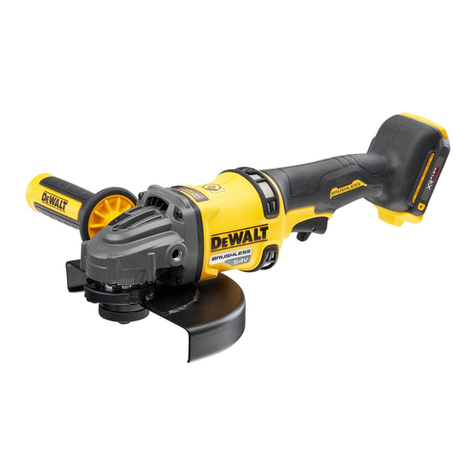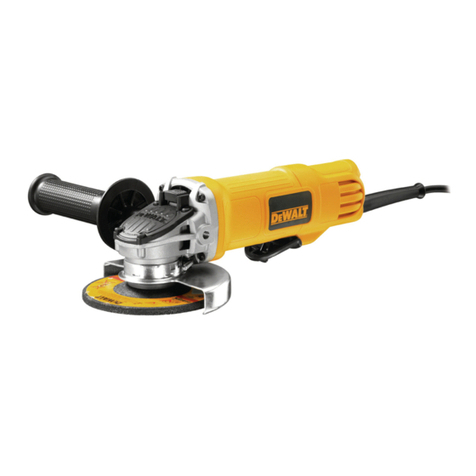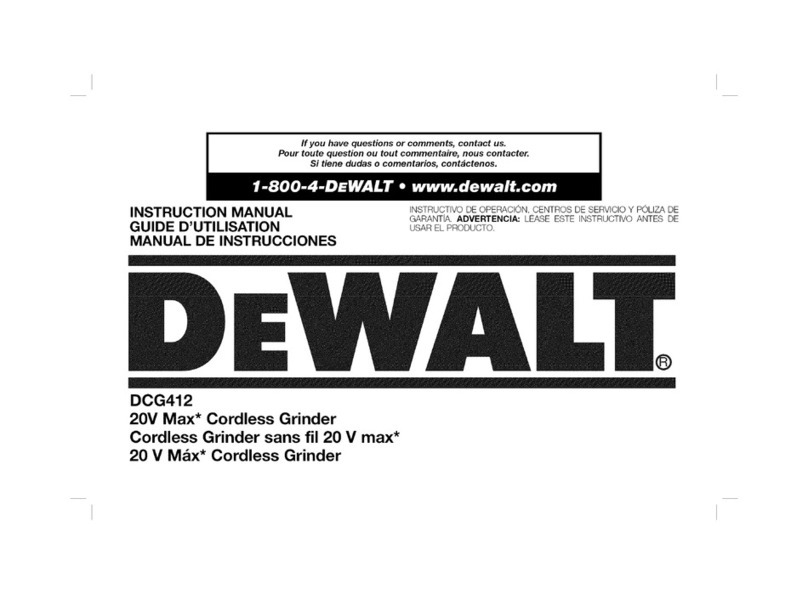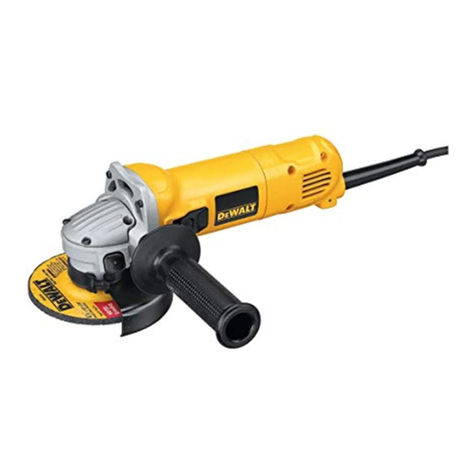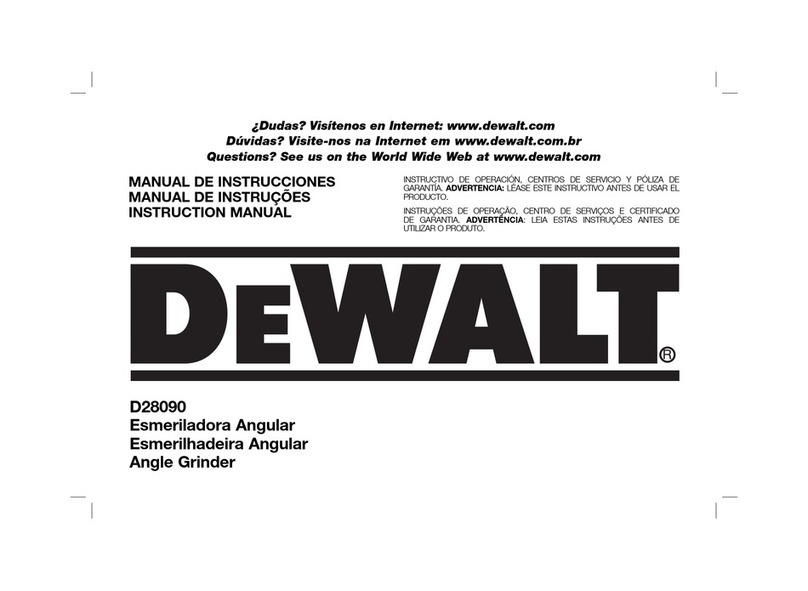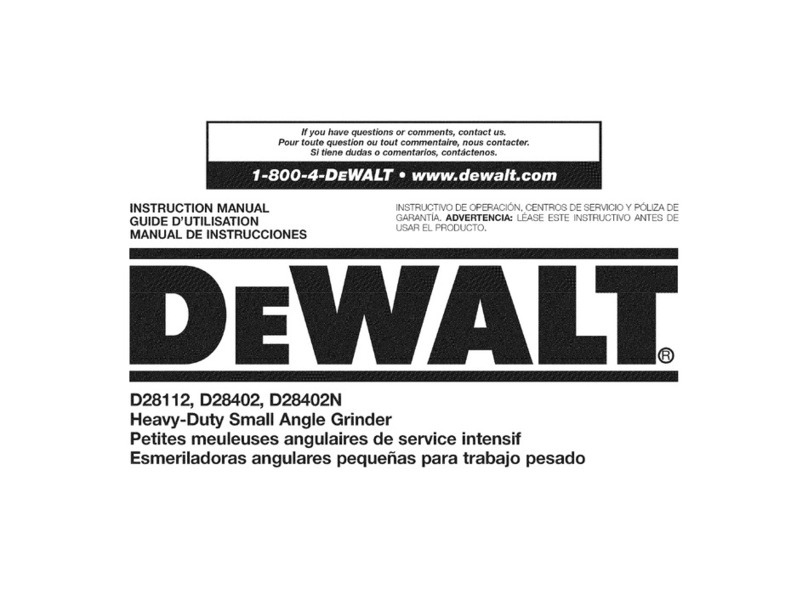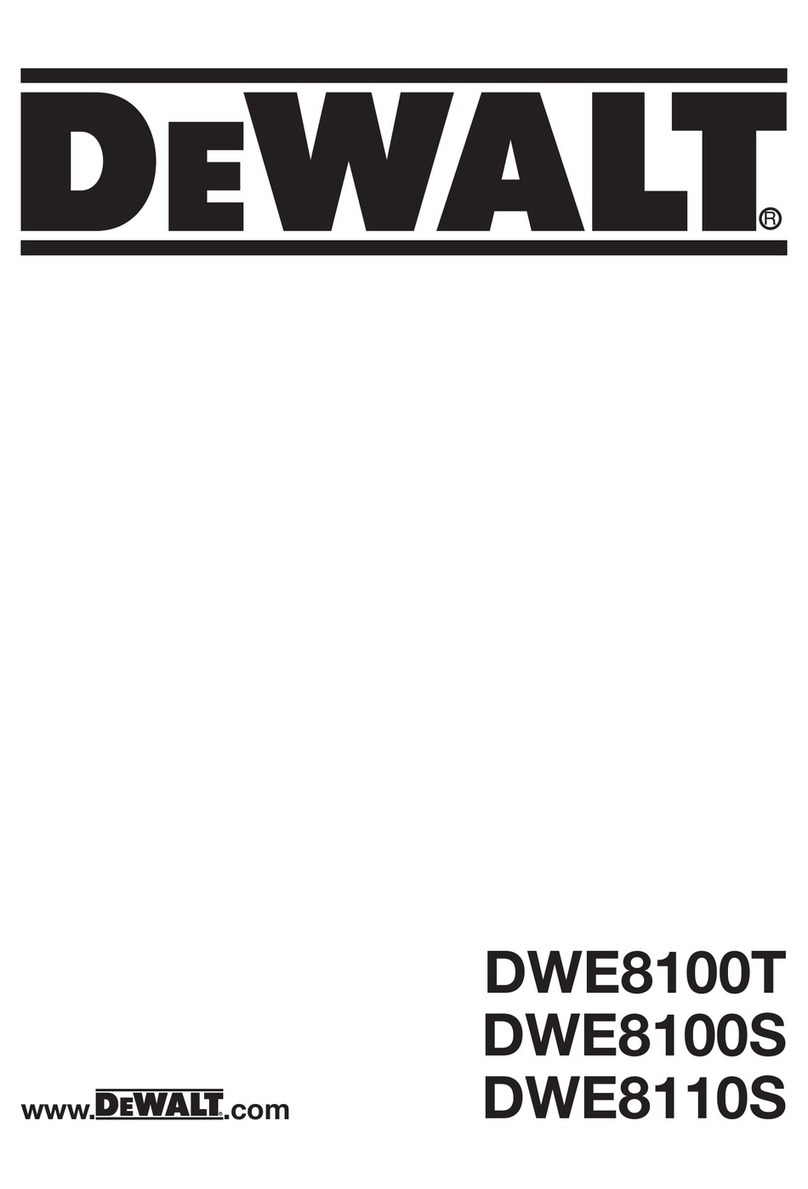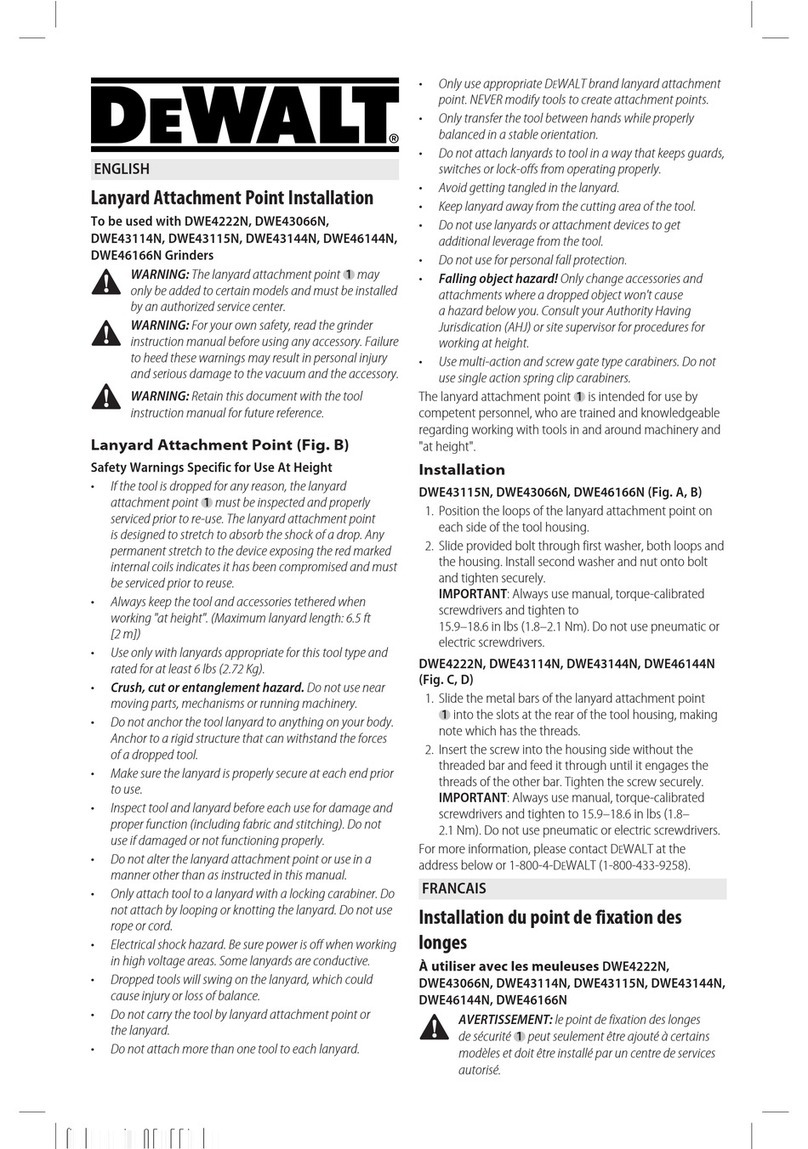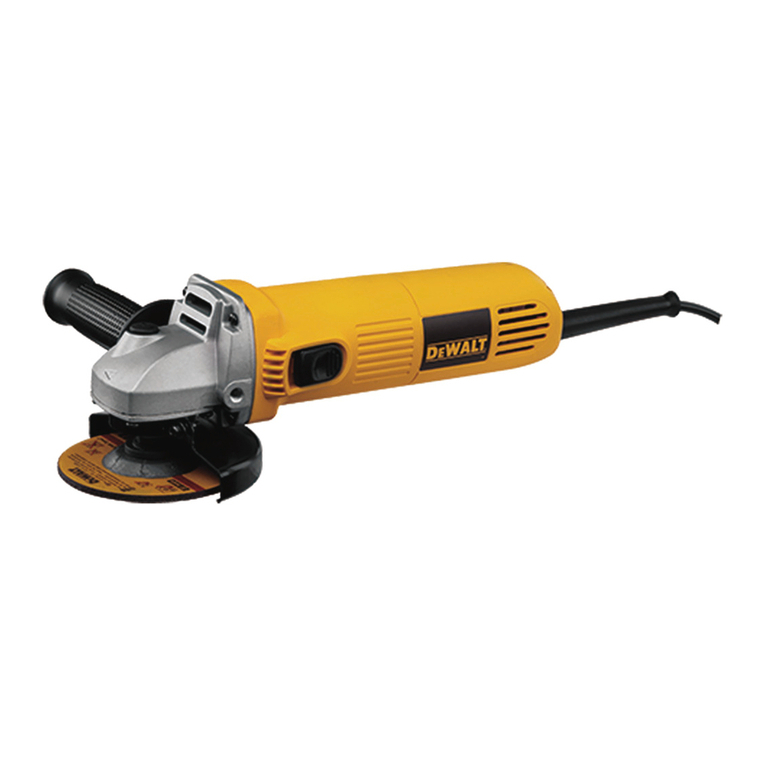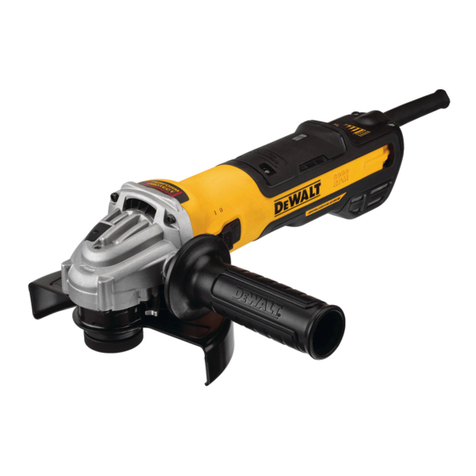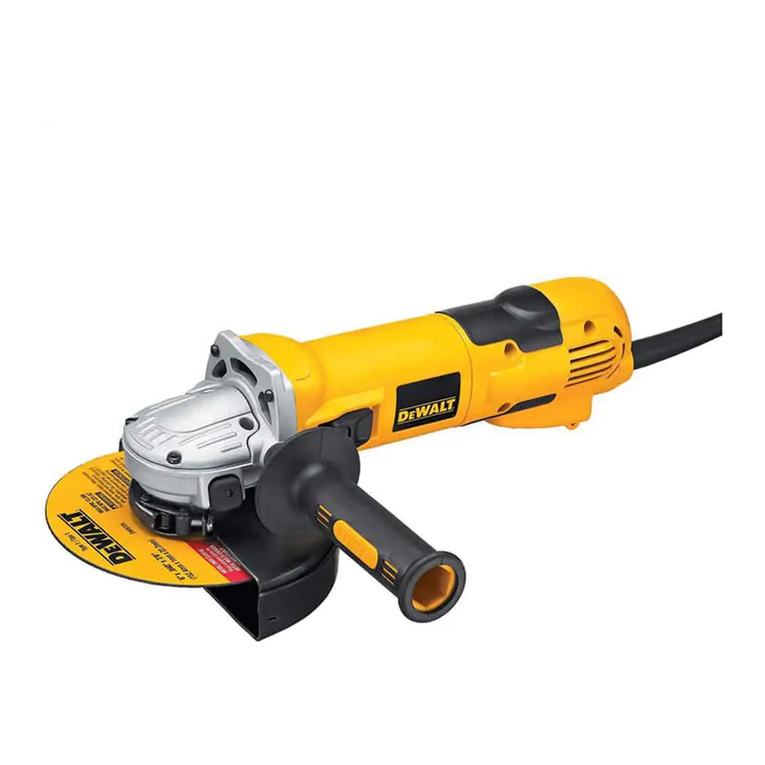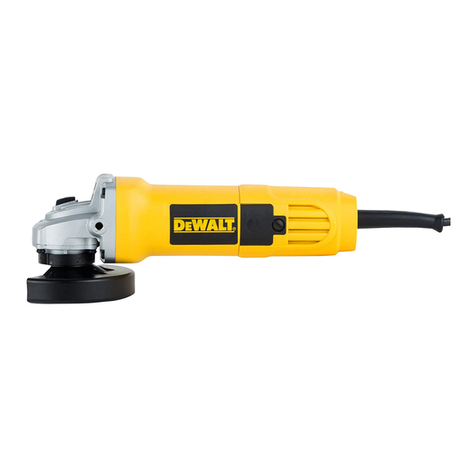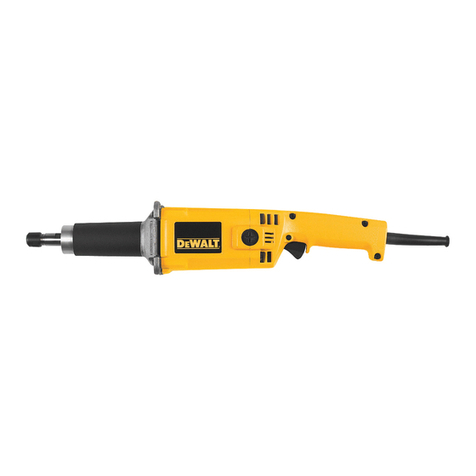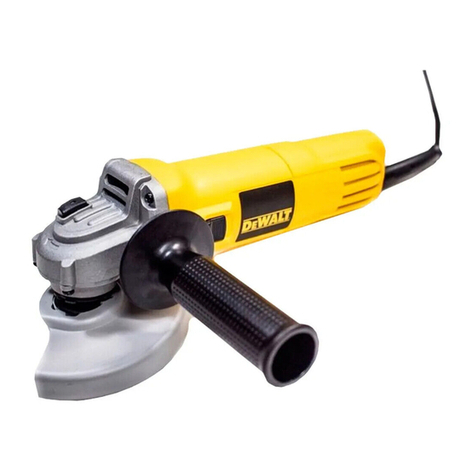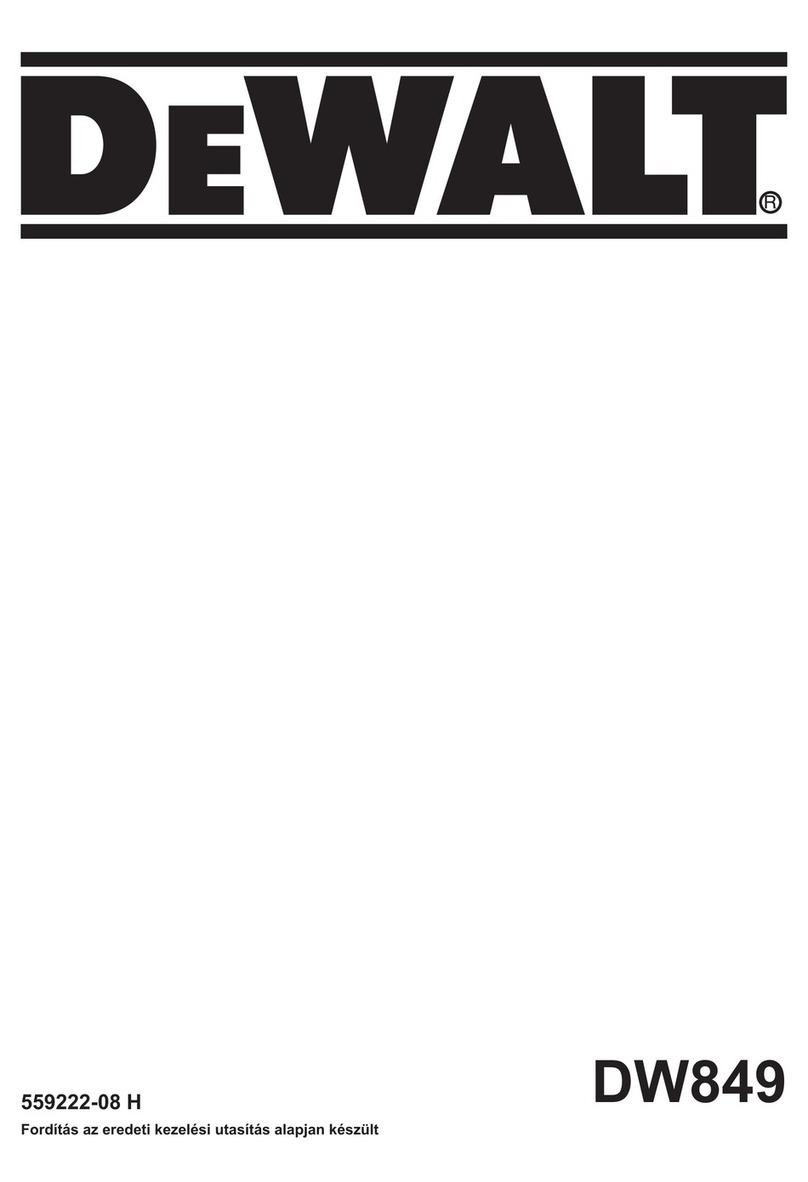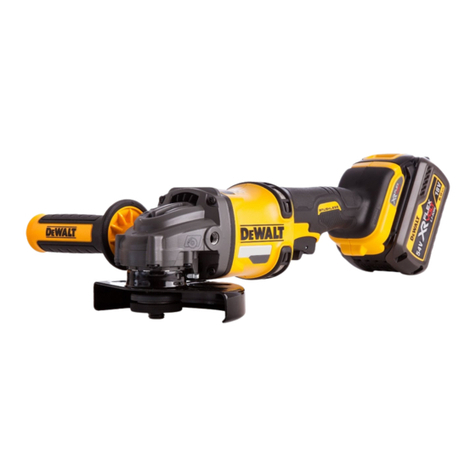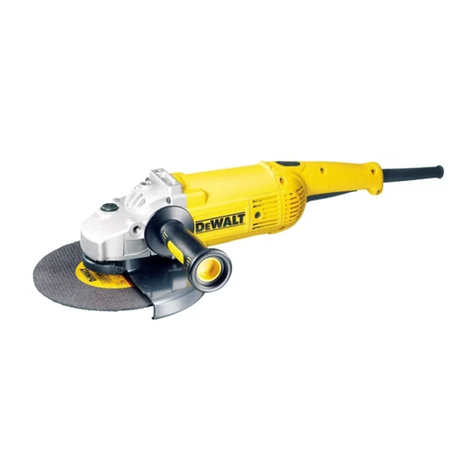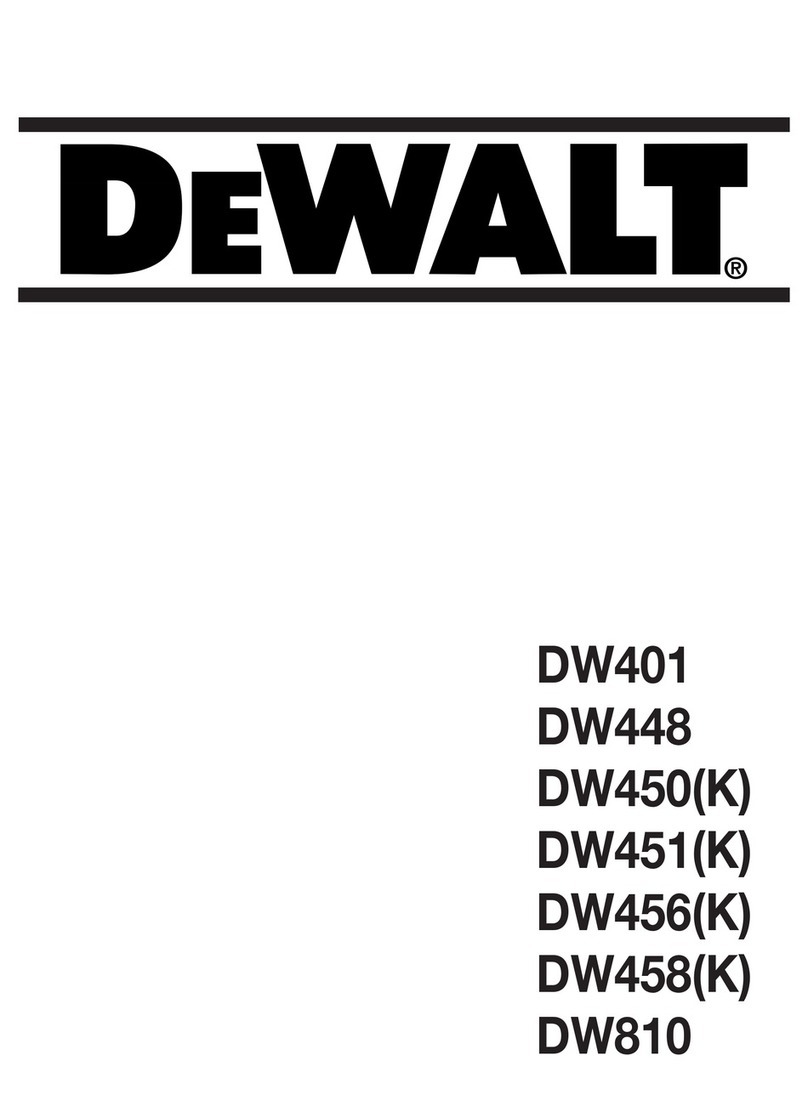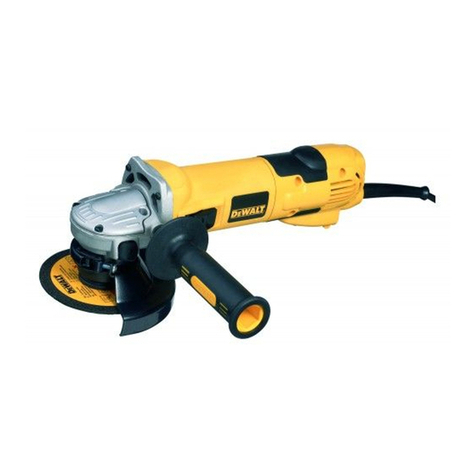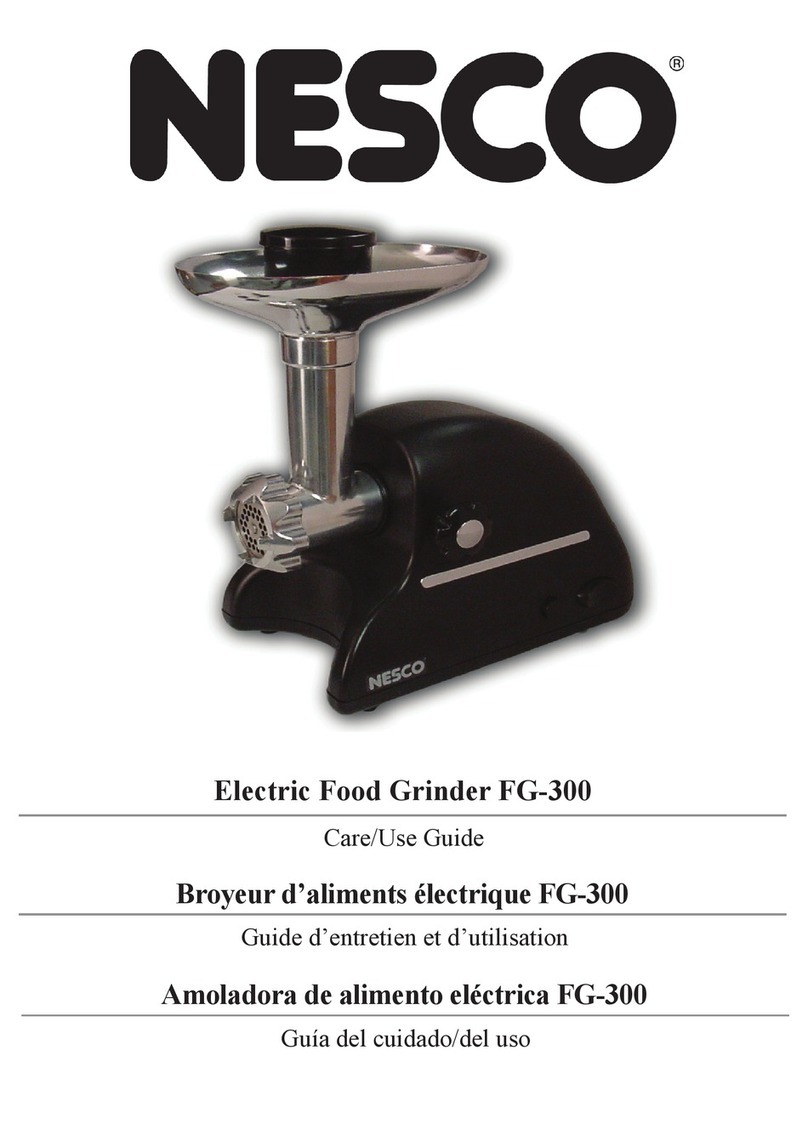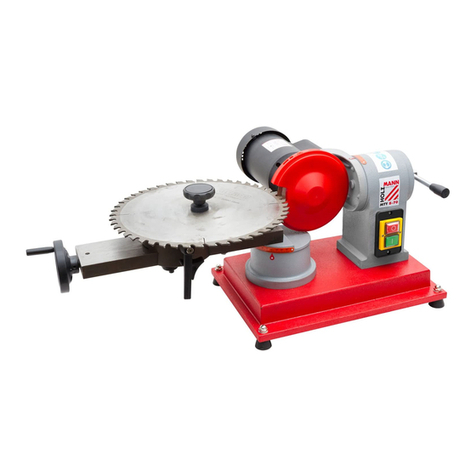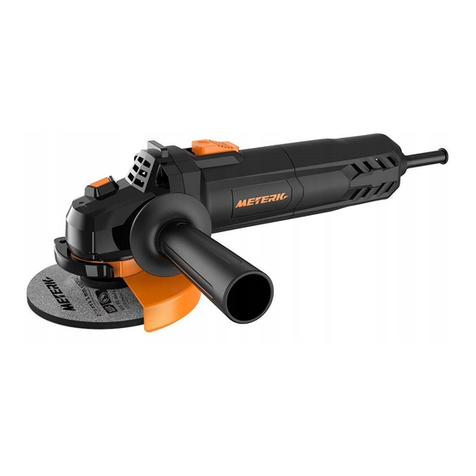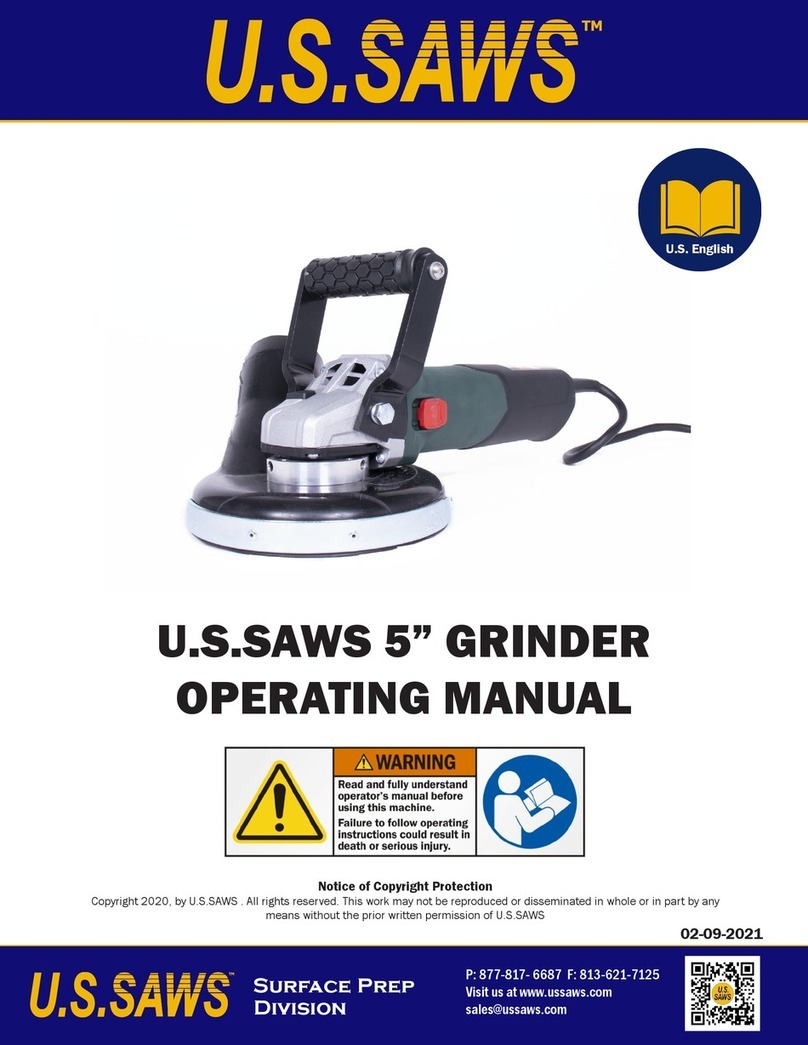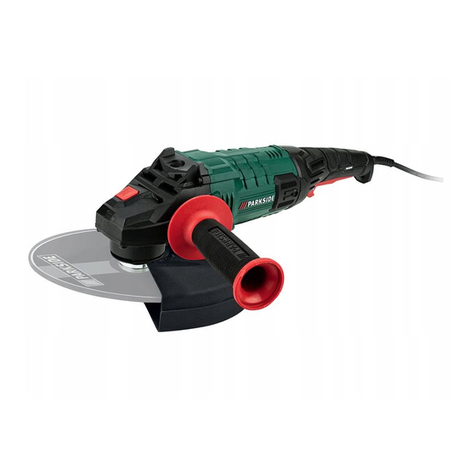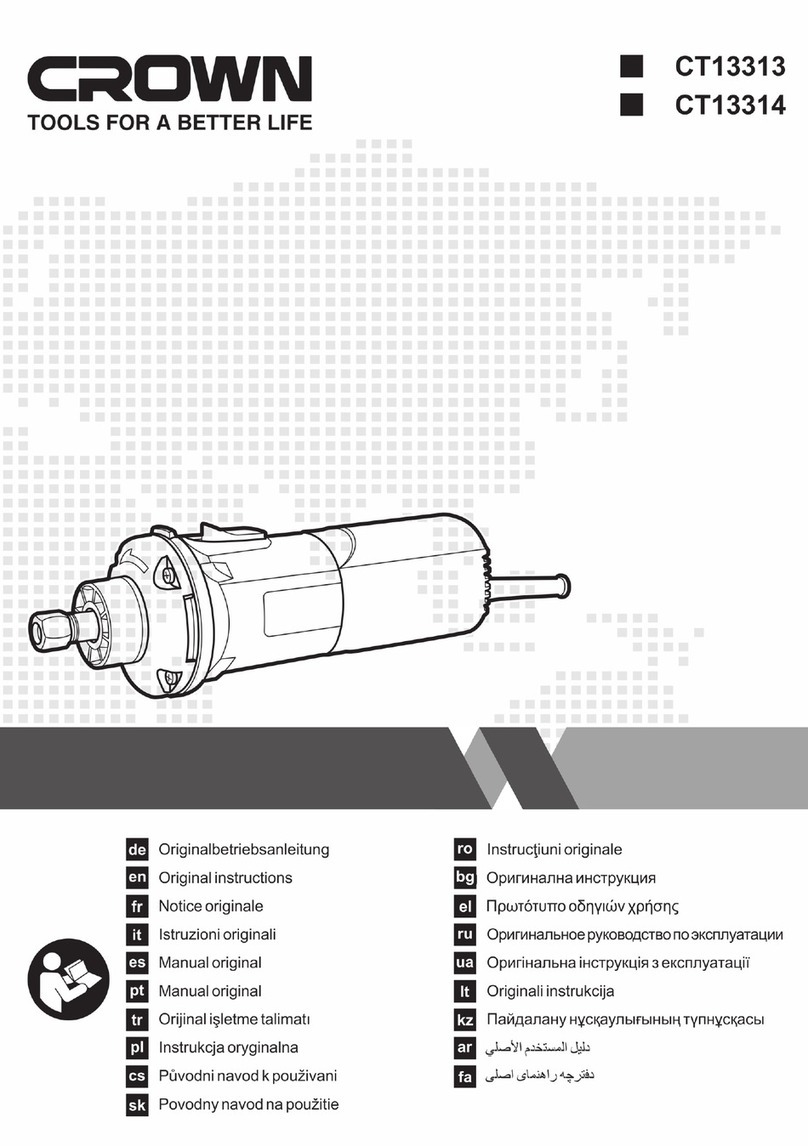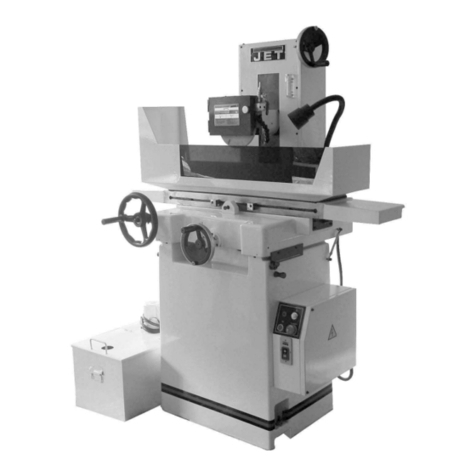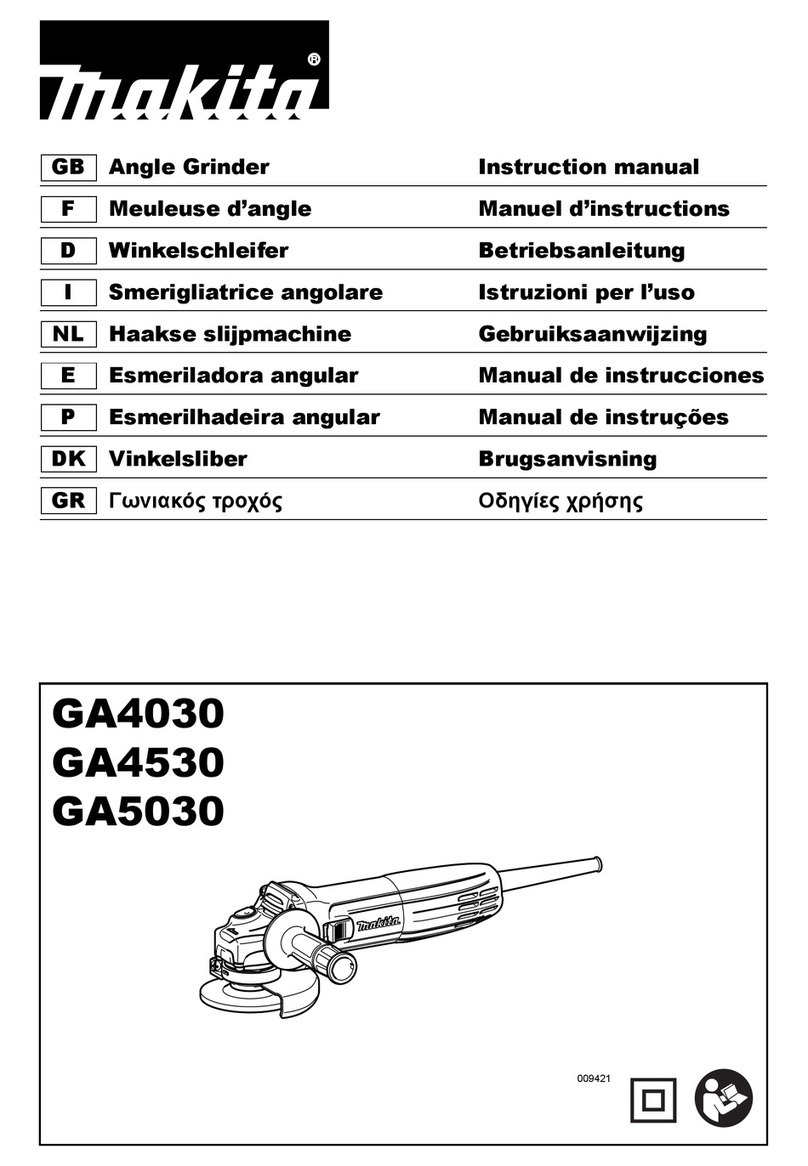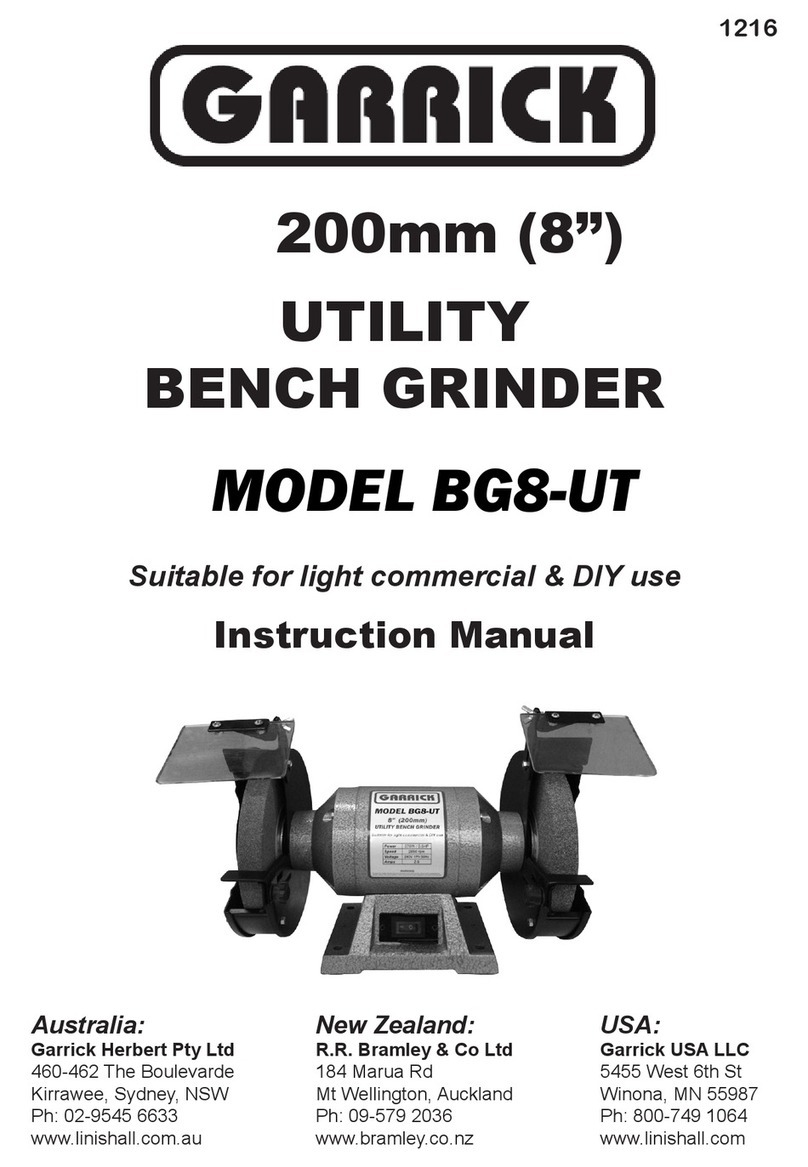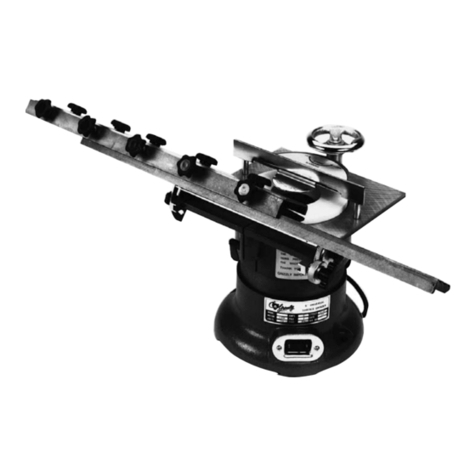
ENGLISH
4
n ) Never lay the power tool down until the
accessory has come to a complete stop. The
spinning accessory may grab the surface and pull the
power tool out of yourcontrol.
o ) After changing the bits or making any
adjustments, make sure the collet nut, chuck
or any other adjustment devices are securely
tightened. Loose adjustment devices can
unexpectedly shift, causing loss of control, loose
rotating components will be violentlythrown.
p ) Do not run the power tool while carrying it at
your side. Accidental contact with the spinning
accessory could snag your clothing, pulling the
accessory into yourbody.
q ) Regularly clean the power tool’s air vents. The
motor’s fan will draw the dust inside the housing and
excessive accumulation of powdered metal may cause
electricalhazards.
r ) Do not operate the power tool near flammable
materials. Sparks could ignite thesematerials.
s ) Do not use accessories that require liquid
coolants. Using water or other liquid coolants may
result in electrocution orshock.
FURTHER SAFETY INSTRUCTIONS FOR ALL
OPERATIONS
Kickback and Related Warnings
Kickback is a sudden reaction to a pinched or snagged
rotating wheel, sanding pad, brush or any other accessory.
Pinching or snagging causes rapid stalling of the rotating
accessory which in turn causes the uncontrolled power tool to
be forced in the direction opposite of the accessory’srotation.
For example, if an abrasive wheel is snagged or pinched by
the workpiece, the edge of the wheel that is entering into the
pinch point can dig into the surface of the material causing
the wheel to climb out or kick out. The wheel may either jump
toward or away from the operator, depending on direction
of the wheel’s movement at the point of pinching. Abrasive
wheels may also break under theseconditions.
Kickback is the result of tool misuse and/or incorrect operating
procedures or conditions and can be avoided by taking proper
precautions as given below:
a ) Maintain a firm grip on the power tool and
position your body and arm to allow you to resist
kickback forces. The operator can control kickback
forces, if proper precautions aretaken.
b ) Use special care when working corners, sharp
edges etc. Avoid bouncing and snagging the
accessory. Corners, sharp edges or bouncing have
a tendency to snag the rotating accessory and cause
loss of control orkickback.
c ) Do not attach a toothed saw blade. Such blades
create frequent kickback and loss ofcontrol.
d ) Always feed the bit into the material in the same
direction as the cutting edge is exiting from the
material (which is the same direction as the chips
are thrown). Feeding the tool in the wrong direction
causes the cutting edge of the bit to climb out of the
work and pull the tool in the direction of thisfeed.
e ) When using rotary files, cut-off wheels, high-
speed cutters or tungsten carbide cutters, always
have the work securely clamped. These wheels
will grab if they become slightly canted in the
groove, and can kickback. When a cut-off wheel
grabs, the wheel itself usually breaks. When a
rotary file, high-speed cutter or tungsten carbide
cutter grabs, it may jump from the groove and you
could lose control of thetool.
Safety Warnings Specific for Grinding and
Abrasive Cutting-Off Operations
a ) Use only wheel types that are recommended
for your power tool and only for recommended
applications. For example: do not grind with the
side of a cut-off wheel. Abrasive cut-off wheels are
intended for peripheral grinding, side forces applied to
these wheels may cause them toshatter.
b ) For threaded abrasive cones and plugs use only
undamaged wheel mandrels with an unrelieved
shoulder flange that are of correct size and
length. Proper mandrels will reduce the possibility
ofbreakage.
c ) Do not “jam” the cut-off wheel or apply excessive
pressure. Do not attempt to make an excessive
depth of cut. Overstressing the wheel increases the
loading and susceptibility to twisting or snagging of
the wheel in the cut and the possibility of kickback or
wheelbreakage.
d ) Do not position your hand in line with and
behind the rotating wheel. When the wheel, at the
point of operation, is moving away from your hand,
the possible kickback may propel the spinning wheel
and the power tool directly atyou.
e ) When wheel is pinched, snagged or when
interrupting a cut for any reason, switch off the
power tool and hold the power tool motionless
until the wheel comes to a complete stop. Never
attempt to remove the cut-off wheel from the cut
while the wheel is in motion, otherwise kickback
may occur. Investigate and take corrective action to
eliminate the cause of wheelpinching or snagging.
f ) Do not restart the cutting operation in the
workpiece. Let the wheel reach full speed and
carefully reenter the cut. The wheel may bind,
walk up or kickback if the power tool is restarted in
theworkpiece.
g ) Support panels or any oversized workpiece
to minimize the risk of wheel pinching and
kickback. Large workpieces tend to sag under
their own weight. Supports must be placed under
the workpiece near the line of cut and near the edge of
the workpiece on both sides of thewheel.
